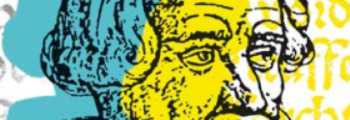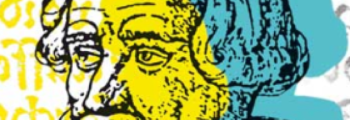Learn more about Karlstadt and follow his steps thoughout history.
Karlstadt on the Main

1486-1499 Andreas Rudolff Bodenstein was born in Karlstadt, a small city on the Main River in the Franconia region of Germany, in 1486. As was customary for his time, he was called Karlstadt after his hometown.
Erfurt and Cologne

1499-1504 Karlstadt studied in Erfurt between 1499 and 1502, receiving a Bachelor of Arts degree, and he continued his academic studies in Cologne from 1502 to 1505.
Wittenberg

1505-1515 In 1505, Karlstadt moved to the University of Wittenberg, newly founded in 1502, and he was promoted to Master of Arts. In 1510, he attained the degree of Doctor of Theology and was ordained as a priest. The following year, Karlstadt became archdeacon in the collegiate Church of All Saints. With this new position came teaching responsibilities in the University’s theology faculty. Alongside his duties as priest and professor, he also continued earlier studies in jurisprudence.
Rome

1515-1516 During a stay in Rome from November 1515 to May 1516, Karlstadt obtained the doctorate utriusque iuris, that is, of both civil and canon law, from the University of Rome.
Wittenberg

1516-1523 Upon his return to Wittenberg, Karlstadt felt challenged by the innovative theological proposals of his colleague Martin Luther. He became an adherent of the “new theology” of grace. Together with Luther, Karlstadt defended this theology against John Eck, Professor of Theology at Ingolstadt, at the Leipzig Disputation from June 27 to July 15, 1519. During Luther’s absence from Wittenberg while secluded in the Wartburg castle (from May 1521 until February 1522), Karlstadt became one of the driving forces of a dynamic intended to transform Wittenberg into a model “Christian City” to be imitated by others. On 20 January 1522, as archdeacon and first cleric in Wittenberg, he married Anna von Mochau. The wedding became part of his theological reform programme.
Orlamünde

1523-1524 After Luther’s return to Wittenberg in early March 1522, divergences appeared between him and Karlstadt. The University censored Karlstadt’s publications, and he began to distance himself from his academic and ecclesial colleagues. In 1523, he began pastoral work in the small rural parish of Orlamünde in Thuringia. He also worked as a peasant farmer, hoping to gain independence from his ecclesiastical income and support his family by manual labor. He also abandoned the title of “doctor,” and published works as “a new layman.” In Orlamünde, Karlstadt initiated a communal model of evangelical reform.
Rothenburg on the Tauber

1524-1525 Karlstadt responded to Luther’s challenge with a volley of pamphlets spreading and defending his views on the Lord’s Supper and his rejection of infant baptism. He passed the winter of 1524-25 in the Franconian town of Rothenburg on the Tauber. His detractors implicated him in the local peasant rebellions, and he ended up a fugitive, unable to gain permission to reside in any territory.
Seegrehna / Kemberg

1525-1529 With nowhere else to turn, Karlstadt asked Luther to intercede for him before the new prince of Saxony, John, so that he could return there. In exchange, Luther demanded that Karlstadt retract his theological positions and maintain silence about the debates then breaking out with Ulrich Zwingli and others concerning the real presence of Christ in the sacrament. From mid-1525 until the beginning of 1529, Karlstadt subsisted with his family in the environs of Wittenberg, first as a farmer and then as a pedlar.
Kiel / Oldersum

1529-1530 By the beginning of 1529, Karlstadt was fed up with the supervision and control of all his contacts and movements, and he fled Saxony in order to assist the lay preacher Melchior Hoffman in a dispute with Johannes Bugenhagen over the Lord’s Supper. After he was expelled from Kiel in April 1529, Karlstad promoted his vision of reform in the surroundings of Oldersum, but Lutheran authorities frustrated his efforts there as well.
Zurich

1530-1534 After passing through Strasbourg, Karlstadt distanced himself from Hoffman, and with the support of Ulrich Zwingli, he obtained a position as pastor at the Grossmünster in Zürich. For a short period in 1531, he was also parish administrator at Altstätten in the Rhine valley.
Basel

1534-1541 In 1534, Karlstadt moved to Basel and, after a decade away from the academy, he returned to teaching in the Faculty of Theology and actively collaborated in its reorganization. At the same time, he worked as a parish priest in Basel’s St. Peter’s Church. He died on December 24, 1541, a victim of the plague, which he contracted while ministering to the sick.